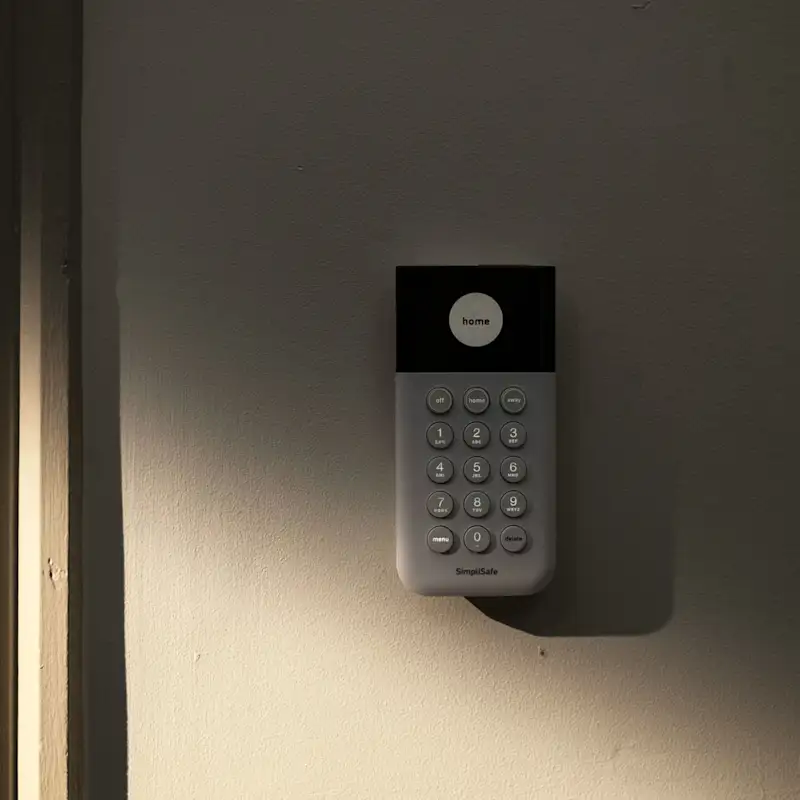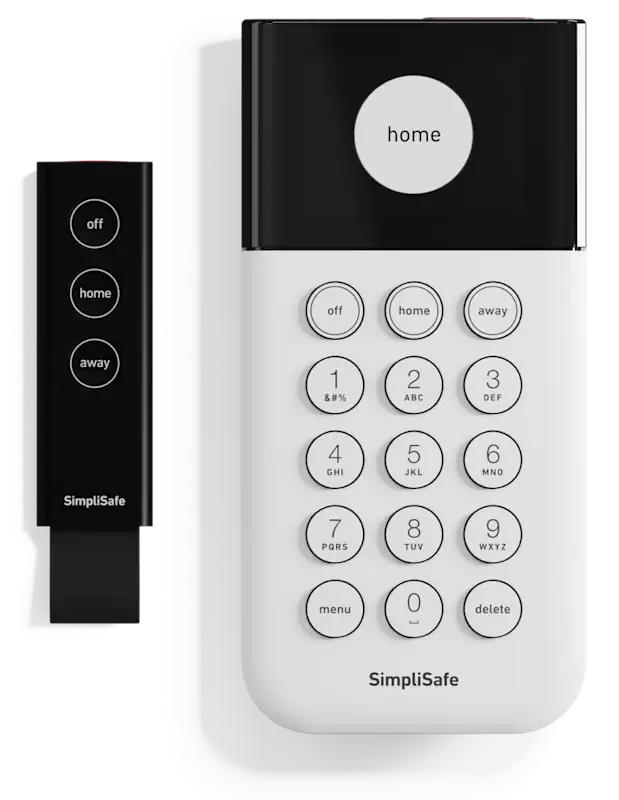Is your SimpliSafe keypad not working when you need it most? That sudden moment of panic can leave you feeling helpless and frustrated.
You rely on your security system to keep your home safe, but a malfunctioning keypad can stop you from arming or disarming it quickly. Don’t worry—you’re not alone, and there are simple fixes you can try right now. Keep reading to discover easy solutions that will get your keypad back in action and restore your peace of mind fast.
Common Causes Of Keypad Failure
The SimpliSafe keypad is a vital part of your home security system. It controls arming, disarming, and system settings. When the keypad stops working, it causes frustration and worries. Understanding common causes of keypad failure helps in quick troubleshooting.
Most keypad issues come from simple problems. These problems include power issues, software glitches, physical damage, and connectivity problems. Each of these can stop the keypad from working properly.
Power Issues
Power problems are a frequent cause of keypad failure. The keypad runs on batteries or power from the base station. Dead or low batteries can cause the keypad to stop responding. Loose power connections also disrupt the power supply. Check battery levels and connections regularly to avoid surprises.
Software Glitches
Software bugs can affect keypad performance. The keypad’s firmware may have errors or need updates. These glitches can cause freezing or unresponsiveness. Restarting the keypad or updating its software often fixes these issues. Regular updates keep the system stable and secure.
Physical Damage
Physical harm can stop the keypad from working. Dropping the device or exposure to water can damage internal parts. Worn-out buttons may stop responding to touch. Inspect the keypad for cracks, dents, or water marks. Protect it from harsh conditions to ensure long life.
Connectivity Problems
The keypad communicates with the base station wirelessly. Signal interference or weak connections can cause communication failures. Walls, metal objects, or electronic devices can block signals. Keep the keypad and base station close for better connectivity. Rebooting the system may restore the connection.

Credit: www.amazon.com
Quick Troubleshooting Steps
SimpleSafe keypads may stop working for many reasons. Quick troubleshooting helps fix common issues fast. This saves time and avoids extra costs. Follow these simple steps to check your keypad’s condition. Each step targets a common problem that blocks keypad use.
Restart The Keypad
Turn off the keypad first. Wait for 30 seconds. Turn it back on. This clears minor bugs and resets the system. Restarting often restores normal function quickly.
Check Battery Levels
Low batteries cause many keypad problems. Open the battery cover. Use a battery tester or replace with fresh batteries. Always use recommended battery types. Proper power keeps the keypad responsive and reliable.
Inspect For Physical Damage
Look closely for cracks, dents, or loose parts. Damage can stop buttons from working. Clean the keypad gently. Remove dust or dirt. Physical issues often need repair or replacement.
Reset The Keypad
Find the reset button or follow the manual steps. Press and hold the reset button for a few seconds. This restores factory settings. Resetting fixes software glitches but erases saved data. Use this step only if others fail.
Advanced Fixes
Advanced fixes can solve tough problems with your SimpliSafe keypad. These steps go beyond basic checks and help restore full function. Follow these clear instructions carefully to avoid any mistakes.
Update Firmware
Firmware controls how your keypad works. Outdated firmware can cause errors or slow responses. Check for updates in your SimpliSafe app. Connect the keypad to Wi-Fi to download the latest version. Updates often fix bugs and improve performance.
Recalibrate The Keypad
Recalibration resets the keypad’s sensors. This helps if buttons feel unresponsive or incorrect. To recalibrate, enter the settings menu on the keypad or app. Follow the prompts to complete the process. This step can improve accuracy and responsiveness.
Replace Faulty Components
Physical damage can stop the keypad from working properly. Common issues include worn-out buttons or battery problems. Open the keypad carefully to inspect parts. Replace damaged buttons or install fresh batteries. Use genuine SimpliSafe parts to ensure compatibility and safety.

Credit: simplisafe.com
When To Contact Support
Knowing when to contact support for your SimpliSafe keypad is important. Some problems need expert help to avoid further damage. Early contact with support can save time and stress.
Warranty And Repair Options
Check your keypad’s warranty status first. Many keypads come with a limited warranty. This covers repairs or replacements for certain defects. If your device is under warranty, contact support for repair options. They may offer a free fix or replacement. Avoid trying to fix it yourself to keep the warranty valid.
Professional Assistance
Some issues need professional diagnosis. Support teams have tools and knowledge to identify problems quickly. They guide you through troubleshooting steps clearly. Complex issues like hardware failure or software glitches require expert help. Contacting support ensures the problem gets fixed properly. It also prevents accidental damage from wrong fixes.
Preventing Future Issues
Support can help you avoid future keypad problems. They provide tips for proper keypad care. They may suggest software updates or resets. Learning from their advice extends your keypad’s life. Regular checks and following support tips reduce breakdown chances. Reach out early to keep your system reliable.
Tips For Maintaining Keypad Functionality
Maintaining the SimpliSafe keypad keeps your security system reliable. Simple care prevents many common issues. Follow these easy tips to keep your keypad working well and extend its life.
Regular Cleaning
Clean the keypad often to remove dust and dirt. Use a soft, dry cloth for wiping. Avoid using water or harsh chemicals. Dirt can block buttons and cause malfunction.
Battery Replacement Schedule
Check battery levels regularly to avoid sudden failures. Replace batteries every six to twelve months. Use the recommended battery type for best results. Low batteries cause slow response or no power.
Safe Handling Practices
Handle the keypad gently to prevent damage. Avoid pressing buttons too hard or dropping the device. Keep it away from moisture and extreme temperatures. Proper care helps the keypad last longer.

Credit: simplisafe.com
Frequently Asked Questions
Why Is My Simplisafe Keypad Not Responding?
The keypad might have dead batteries or a loose connection. Check power and replace batteries if needed.
How Do I Reset A Simplisafe Keypad?
Press and hold the reset button for 10 seconds to restart the keypad.
Can A Keypad Software Update Fix Issues?
Yes, updating the keypad firmware can solve bugs and improve performance.
What Causes Simplisafe Keypad Buttons To Stick?
Dust or dirt under buttons can cause sticking. Clean the keypad gently with a soft cloth.
How To Fix Simplisafe Keypad After Water Damage?
Turn off power immediately and let the keypad dry for 24 hours before testing again.
Conclusion
A SimpliSafe keypad not working can cause real frustration. Checking batteries and connections often solves the issue. Resetting the keypad might help if it still won’t respond. Keeping your system updated ensures smooth operation. Don’t ignore small problems; they can grow bigger fast.
Simple steps can keep your security system reliable. Stay calm and follow the fixes carefully. Your home’s safety depends on a working keypad. Trust the process and keep your system ready.
